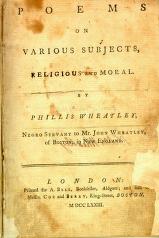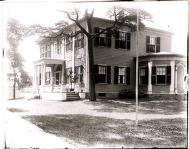|

Dress

Washington Memorial

"Poems on Various Subjects, Religious and Moral"

Rowland Stebbins (1794-1848)

"The Country Builder's Assistant, Fully Explaining The Best Methods For Striking Regular And Quirked Mouldings:"

Coleman- Hollister House

"Eulogy on King Philip as Pronounced at the Odeon"
|
Summary and Objective
The subject of this activity is the use by citizens of the new American nation (1790 - 1840) of the legacies of ancient Greece and Rome, the two great democracies in antiquity, to create a national cultural identity that tied the new republic and its citizens together, specifically in education and the arts. The goal is to have students study various examples of art, architecture, and writing from this time period to identify evidence of ancient Greek or Roman influence in the new culture.
Teaching Plan
Step 1.
Point out to students that once the revolution was over, citizens in the new American nation were concerned with not only creating a new national government, but also a new national culture. Ask the students why citizens in the new United States would be concerned about having a new national culture. Inform students that in an effort to distinguish their new democracy from the tyrannical monarchies of Europe, citizens of the new nation reached back in time for inspiration, to the great classical democracies of ancient Greece and Rome.
Step 2.
Provide samples of ancient Greek and Roman art, architecture, history, and mythology and ask the students what are the defining features of these images. Compile a list of defining features on the board.
Step 3.
Divide the class into seven groups and ask each group to study a particular item from attached collection and compile a list of evidence of ancient Greek or Roman influence in their item.
Step 4.
Have each group report its findings to the larger class. If an in-focus machine is available, project the images as the respective groups present their findings.
|




